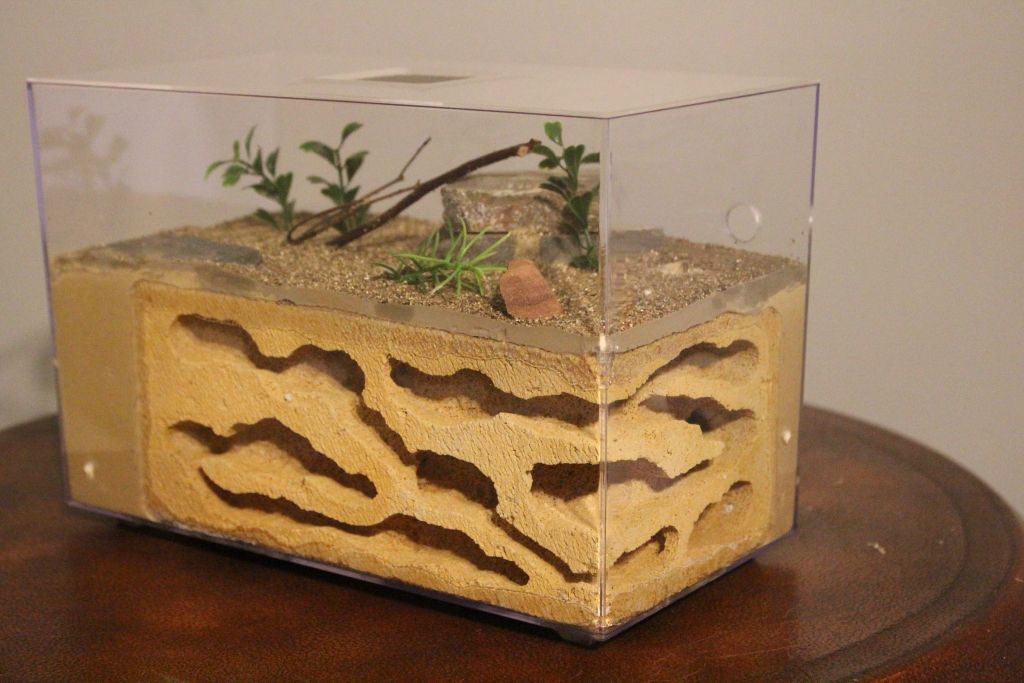Setting up a Formicarium Atom C can be a rewarding project for ant enthusiasts and hobbyists. This guide will walk you through the process of setting up a Formicarium Atom C, ensuring your ants have the best environment to thrive. We’ll cover everything from unboxing to maintenance, making it easy for both beginners and experienced keepers.
What is the Formicarium Atom C?
The Formicarium Atom C is a modern ant habitat designed to replicate the natural environment of ants, providing them with a suitable and controlled setting for their colony. Its sleek design and advanced features make it an ideal choice for observing ant behavior and supporting a healthy colony.
Features of the Formicarium Atom C
- Modular Design: Allows for customization and expansion.
- Integrated Hydration System: Maintains appropriate moisture levels.
- Clear Acrylic Walls: Offers unobstructed views of the ants’ activities.
- Ventilation: Ensures proper airflow to prevent mold and maintain a healthy environment.
Unboxing and Preparing the Formicarium Atom C
1. Unboxing the Formicarium Atom C
Carefully remove the Formicarium Atom C from its packaging. Ensure you have all the components, which typically include:
- The main formicarium unit.
- A hydration reservoir and associated tubing.
- Accessories like outworlds, feeders, and tools for setup.
- Instructions manual.
Inspect each part for any damage that may have occurred during shipping.
2. Cleaning and Sanitizing
Before setting up, clean all parts of the Formicarium Atom C. Use a mild soap solution and ensure all components are thoroughly rinsed and dried. Avoid harsh chemicals that might harm your ants.
Setting Up the Formicarium Atom C
1. Assembling the Formicarium
Follow these steps to assemble your Formicarium Atom C:
- Base Assembly: Begin by placing the base on a stable surface. If your model includes multiple sections, assemble them according to the manual’s instructions.
- Attach Hydration System: Connect the hydration reservoir to the formicarium. Ensure the tubing is properly fitted to avoid leaks. The hydration system will keep the environment moist, which is crucial for ant survival.
- Install Ventilation: Ensure that the ventilation holes are unobstructed. Proper airflow helps prevent mold growth and ensures a healthy habitat.
2. Adding Substrate
Add an appropriate substrate to the formicarium. Common choices include:
- Agar: A gel-like substance that provides moisture.
- Sand and Soil Mixtures: Mimics natural soil conditions.
- Coconut Fiber: Retains moisture and is easy to maintain.
Spread the substrate evenly, creating a depth suitable for the ant species you plan to keep.
3. Setting Up the Nest Area
The nest area is where ants will build their colony. For the Formicarium Atom C:
- Create Chambers: If your formicarium allows, create different chambers to simulate natural nesting conditions. Ensure there are various sizes and depths to accommodate different stages of the colony’s development.
- Add Nesting Materials: Include materials like fine sand or soil that ants can use to construct their nests.
4. Connecting the Outworld
The outworld is an essential part of the Formicarium Atom C, providing space for foraging and exploration.
- Attach the Outworld: Follow the instructions to connect the outworld to the main formicarium. Ensure there are no gaps where ants could escape.
- Set Up Feeder and Water Source: Place food and water sources in the outworld. You can use specialized feeders and water containers designed for ants.
Introducing Ants to the Formicarium Atom C
1. Choosing the Right Ant Species
Select a species of ants suitable for the Formicarium Atom C. Some species are more adaptable to captive environments and will thrive better in this setup.

2. Acclimating the Colony
Gently introduce the ant colony into the formicarium. Ensure the ants have time to acclimate to their new environment before adding more food or making other adjustments.
3. Monitoring and Maintenance
- Observe Behavior: Watch the ants as they settle into their new home. Look for signs of stress or discomfort and adjust the environment as needed.
- Maintain Cleanliness: Regularly clean the formicarium to prevent mold and keep the habitat hygienic.
Troubleshooting Common Issues
1. Leaks in the Hydration System
If you notice leaks, check the connections between the reservoir and the tubing. Ensure all parts are securely attached and replace any damaged components.
2. Excess Moisture or Dryness
Adjust the hydration system to maintain proper moisture levels. If the environment is too dry or too wet, modify the water input accordingly.
3. Ant Escape
If ants are escaping, check for any gaps or openings in the formicarium. Ensure all connections are secure and that there are no unsealed areas.
Conclusion
Setting up a Formicarium Atom C is a straightforward process when you follow these guidelines. By carefully assembling the habitat, adding appropriate substrates, and monitoring the environment, you can create an ideal living space for your ant colony. This setup not only provides a fascinating glimpse into the lives of ants but also ensures their well-being in a controlled and enriching environment.
With the right preparation and maintenance, your Formicarium Atom C will offer a thriving home for your ants and provide you with endless hours of observation and enjoyment.


